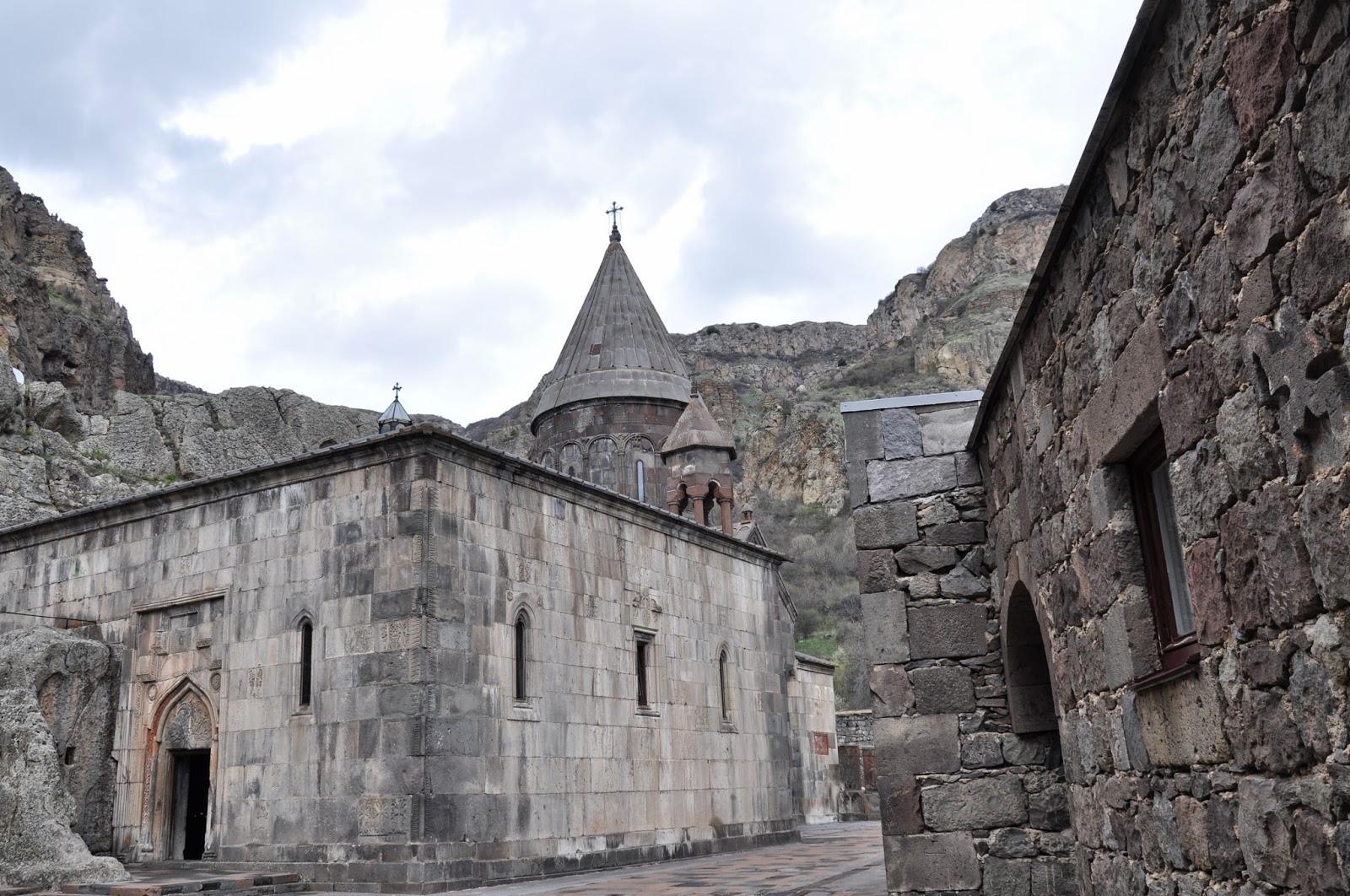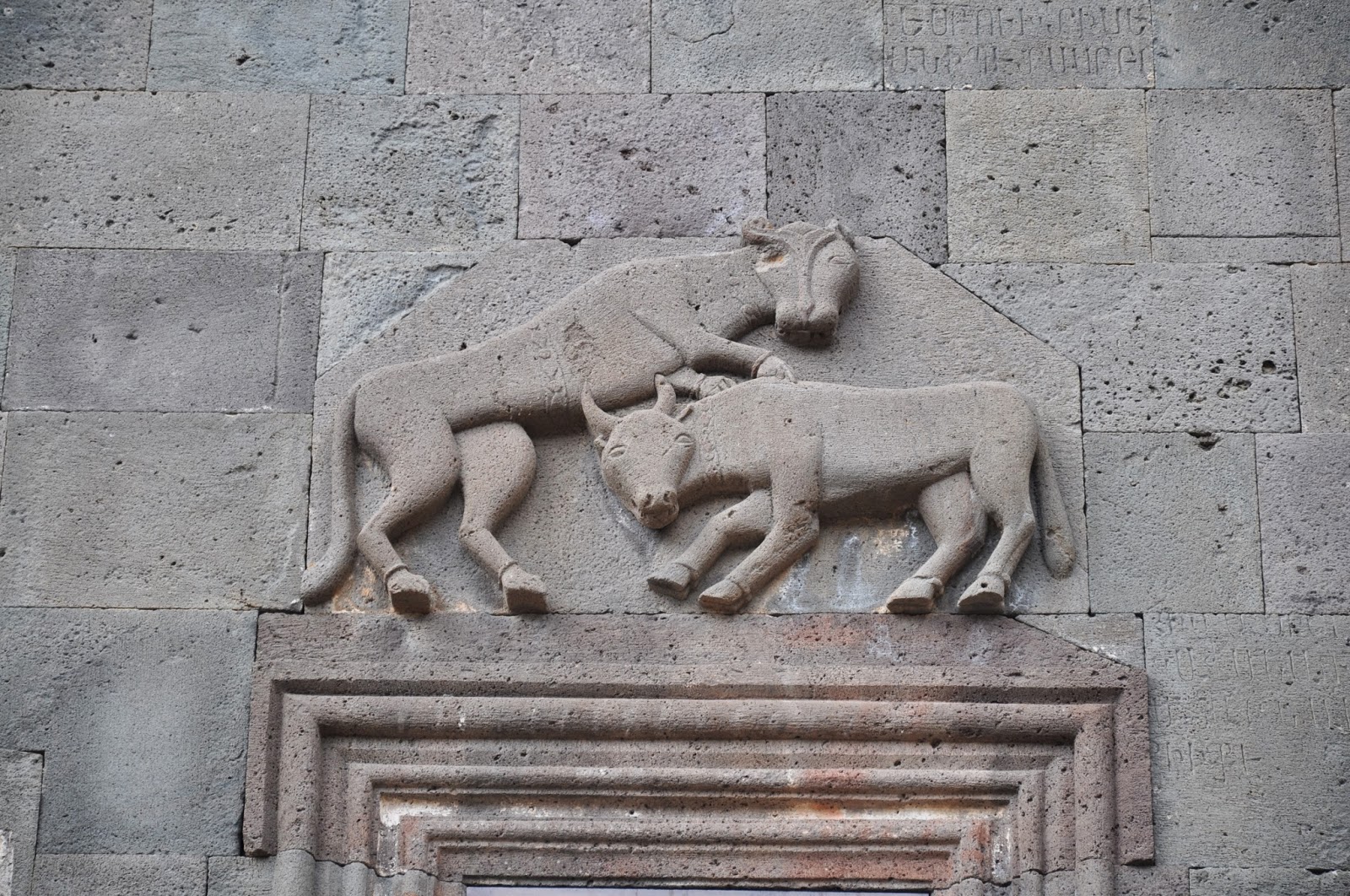Our last visit of the day, which would also be the last visit of the Armenian circuit was to the Geghard Monastery, listed as a UNESCO World Heritage Site.
The spectacular towering cliffs surrounding the Monastery, which we photographed from a distance, are part of the Azat river gorge and have been included together with the Monastery in the World Heritage Site listing.
Its name, Monastery of the Spear is said to have originated from the spear which pierced Christ at the calvary and was allegedly brought to Armenia by Apostle Jude and later stored amongst many other relics.
Nothing remains of a 4th century Monastery built here and the revival of the Monastery building only occured in 1215, though there are some inscriptions dating to 1160 just above the gateway to the Monastery complex.
There are more than 20 rock-hewn chapels and service premises surrounding the main site, many of which with carvings.
The main buildings of the Monastery are surrounde by walls on three sides and a cliff face on the other. its construction is said to have been started by the Zacharian family who came into possession of it after the dfeat of the Seljuks.
The main Cathedral built in 1215 is a cross dome one, with thecircular tambour decorated with graceful arcature.On the portals and cornices there are a few birds and animals, as well as floral and geometrical patterns.The gavit on the west side is attached to the rock face and its tympanum has an interestingly beautiful floral design aithin the ogee arch.


On the north wall of the Prosh family Mausoleum above the archways one could see a relief carving of a goat with a ring in its mouth to which is attached a rope whose two ends are round the necks of two lions which are looking outwards.The ends of the lions' tails are are dragons looking upwards. Below it an eagle with spreading wings grasps a lamb in its talons.
To the right of the entrance two sirens, mythical creatures with the crowned heads of women and the body of birds. These creatures said to have lived on rocky islets are said to have lured men to their death, either by enchanting them with their singing so that they were shipwrecked or in other versions having them fall asleep with their singing so that they could kill them in their sleep.
The gavit which formed the burial vault of Prince Papak Prosh and his wife is accessed by a narrow subterranean passage decorated with khachkars carved into the rock, which are quite impressive.
We strolled around for a while so as to take some pictures before heading back to Yerevan for what would turn out to be the farewell dinner.
As we looked at the surrounding view we, I believe, felt a touch of sadness for we would soon be leaving this country and would in one way or another remember it in the days to come.






























No comments:
Post a Comment